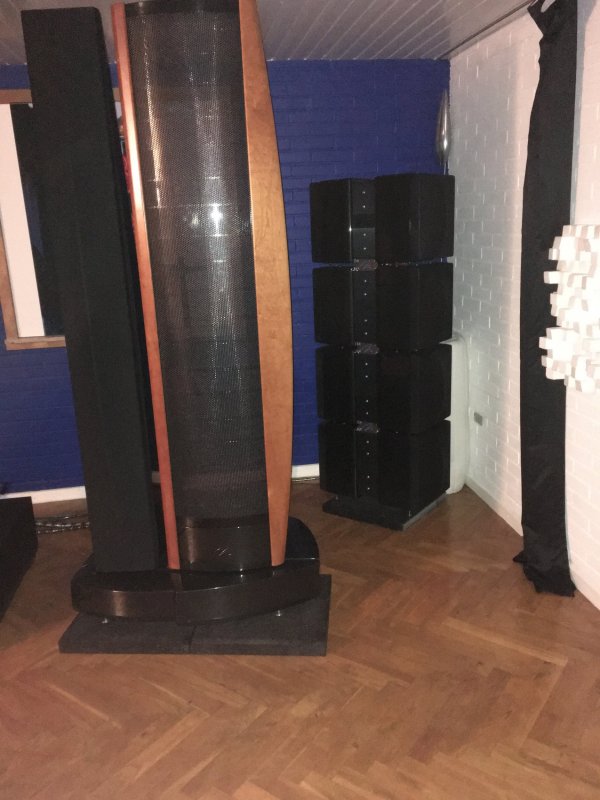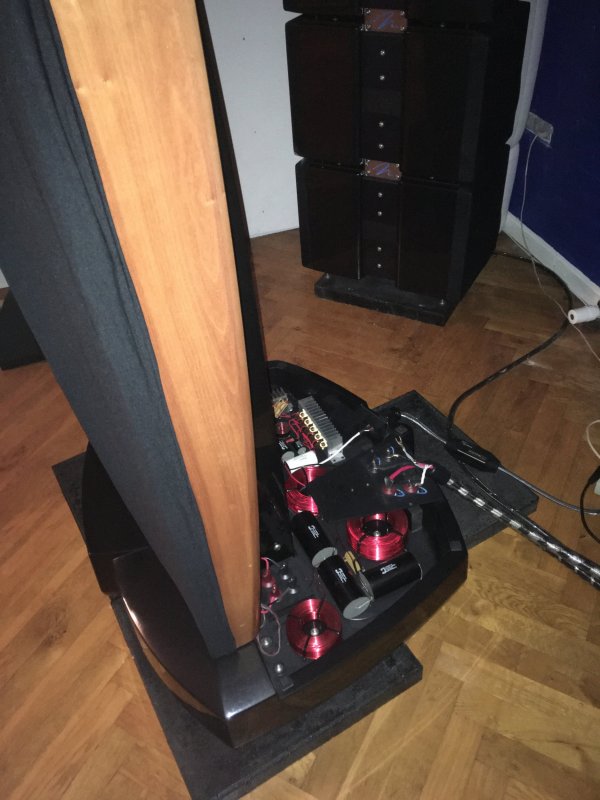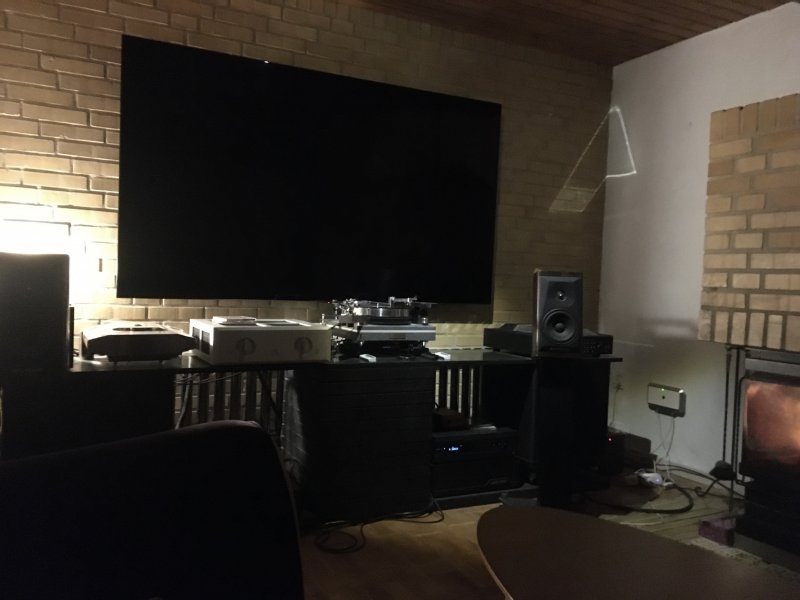Raising the speakers in height
This is an update from January 2023.
The Sound Anchors stands for my monitors were on single concrete platforms. For a picture, see for example post #693:
 www.whatsbestforum.com
www.whatsbestforum.com
Reading about speaker height and the size of instruments on WBF, as well as given my feeling that the soundstage from my speakers could be higher -- it seemed that I was looking straight at the musicians rather than at them on a stage -- inspired me to do something that I should have tried years ago. That is, raising my speakers, to a level of what I judged to be the tweeter above the ears.
I went to Home Depot and bought another two of the 16" by 16" concrete tiles that are 1.75" high (expense 10 bucks total). I put them on top of the first set of tiles, just like I have two sets of concrete tiles under each of my subwoofers. With that change, I also had to adjust for more speaker toe-in to achieve a correct balance again.
The result was astonishing:
Here are photos, all taken from the listening seat:
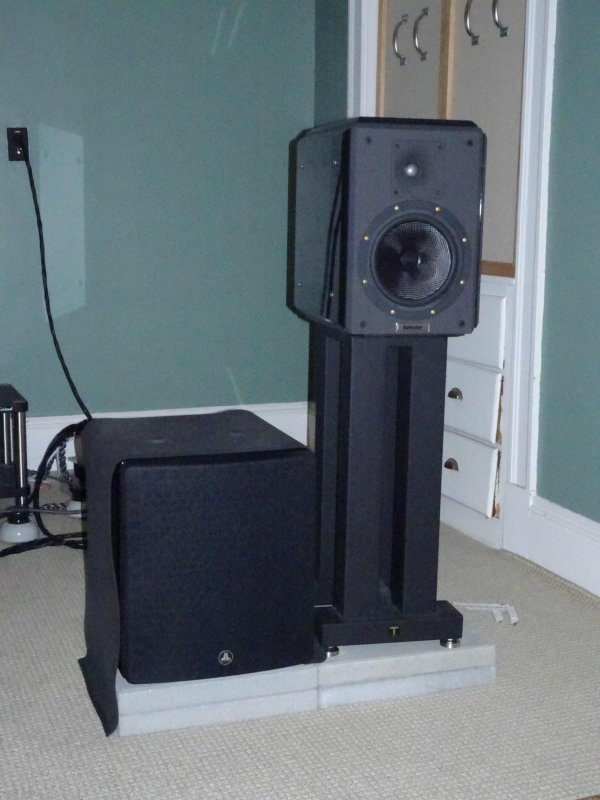
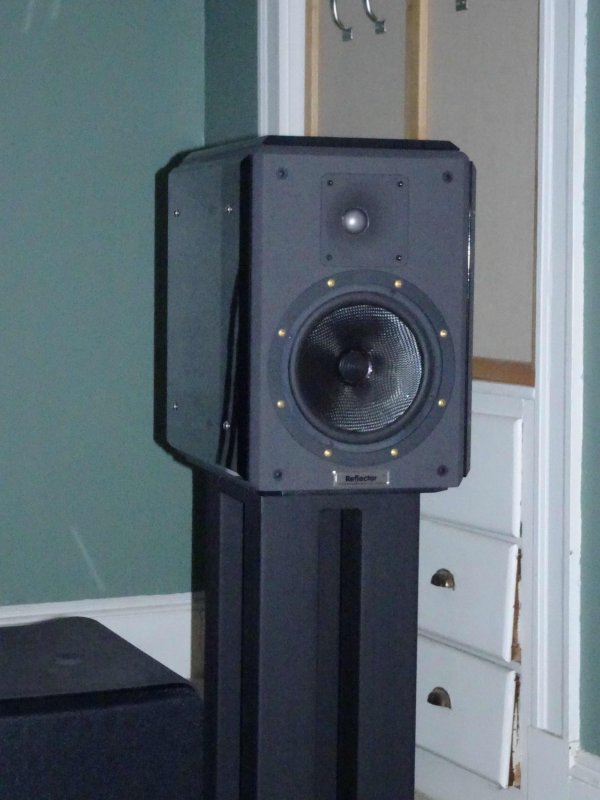
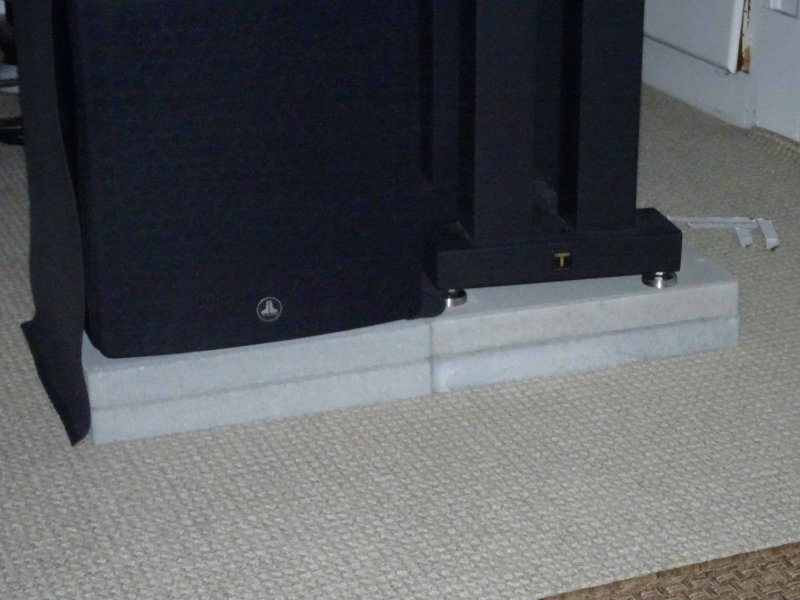
This is an update from January 2023.
The Sound Anchors stands for my monitors were on single concrete platforms. For a picture, see for example post #693:
My monitor/subwoofer system
(cont.) Some skeptics may say that the real source for distortions could be the digital. I know that this is not the case. Ian (Madfloyd) has the same DAC, and even before the modifications addressing reduction of electronic noise that he applied to his unit it had sounded free of distortion in...
Reading about speaker height and the size of instruments on WBF, as well as given my feeling that the soundstage from my speakers could be higher -- it seemed that I was looking straight at the musicians rather than at them on a stage -- inspired me to do something that I should have tried years ago. That is, raising my speakers, to a level of what I judged to be the tweeter above the ears.
I went to Home Depot and bought another two of the 16" by 16" concrete tiles that are 1.75" high (expense 10 bucks total). I put them on top of the first set of tiles, just like I have two sets of concrete tiles under each of my subwoofers. With that change, I also had to adjust for more speaker toe-in to achieve a correct balance again.
The result was astonishing:
- More finesse of midrange timbre, even less hardness than lately. More midrange detail, and a more natural presentation of it.
- Smoother transient response, but still incisive when needed. Really obvious on string quartets, for example.
- More body and fullness of sound, yet at the same time a more airy see-through quality in the midrange. Even though also obvious on other material, this is especially noticeable on orchestral strings.
- Yet less distortion than before. More effortlessness, to the extent that it reminds me of much larger speakers.
- Part of the overall improvement is that I also moved the speakers forward an inch. But raising the speakers had an even more significant effect.
- Last but not least, the soundstage is raised, to the extent that you feel more like at a concert.
Here are photos, all taken from the listening seat:





